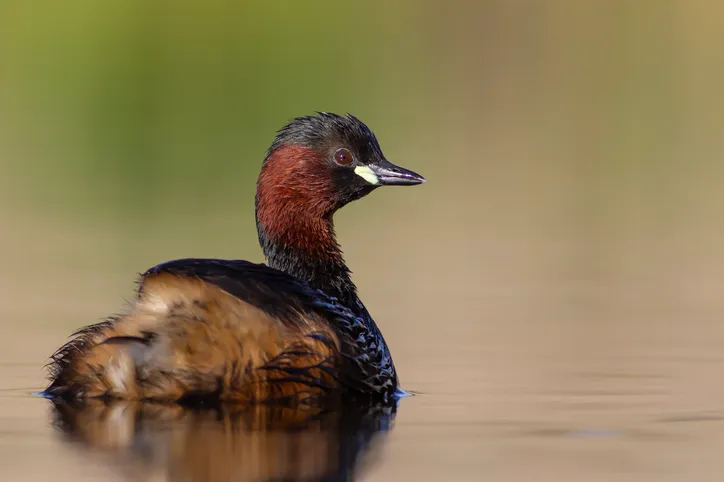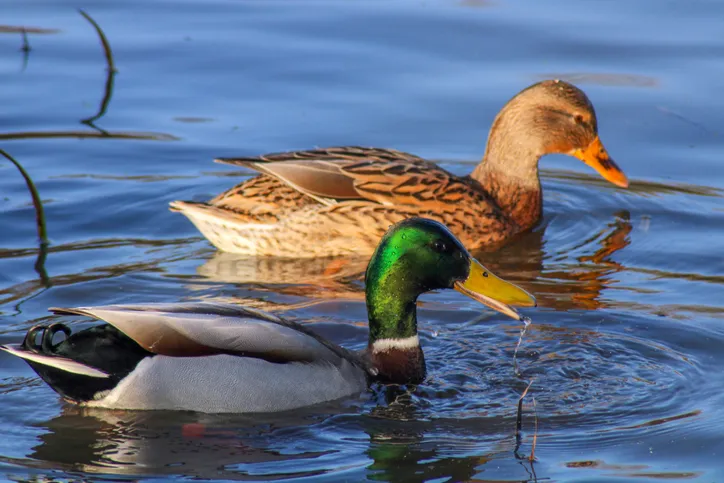Any river can hold a marvellous array of wildlife but the trick is to be quiet when walking on riverbanks and be prepared to stand or sit still for 30 minutes or so until the wildlife relaxes, forgets you’re there and emerges from hiding. Fish in particular are very sensitive to footsteps on the bank and so will shoot into hiding long before you arrive, unless you are stealthy.
Discover what animals live on and in Britain's rivers with our guide to water wildlife, including a look at the impact of river pollution on wildlife and what to do if you spot river pollution.
Images from Getty.
What makes lowland rivers special?
Britain’s lowland rivers flow slowly compared to upland streams and so have a cast of wildlife more similar to those of lakes and ponds. Yet the gentle flow and the subtly changing landscape above and below the water means there is a huge variety of animal and plant life across the entire river system.
What is the impact of river pollution?
Pollution from sewage and agricultural chemicals, slurry and soil run off is a big issue in Britain at the moment. These substances can reduce oxygen levels and suffocate the riverbed leading to a massive reduction in the abundance of life in the river. Sometimes severe events lead to mass deaths of fish and other wildlife. Everyone can help with reporting pollution incidents – scroll to the bottom of this article for more advice.
Best species to spot by a river
Kingfisher

A hunter of minnows and other small fish, the kingfisher hovers or waits on twigs overhanging the water before marking a target and plunging beak first to snatch its prey. Most sightings of kingfishers are fleeting – a flash of blue as they fly low, fast and direct up or downriver, wings a blur. However, you can get an early warning of a kingfisher fly-past by listening for its loud, high pitched and insistent ‘beep’ or ‘beep-beep’. Think roadrunner on helium.
Bream

Two species of bream are found in Britain’s lowland rivers – the silver bream and the common bream, species with narrow but strikingly deep bodies. Both are members of the carp family and have suits of dense of silvery scaly armour when they are small but the common bream grows far larger than its cousin and turns an attractive bronze colour as it matures. They gather in large shoals in early summer to spawn and lucky riverside walkers might spot the excited swirling circles in the water. Bream mostly feed on the bottom of rivers, foraging in the silt to suck up worms, molluscs and insects.
Roach

A very common slender, silver-sided, red-finned fish that can look grey-green when observed from above. Roach rarely grow large – the record rod-caught fish in the UK is 4lb 4oz (almost 2kg) – and smaller fish can form huge shoals, feeding on aquatic creatures in the midwater and surface.
Bleak

A tiny, slender silvery fish up to 15cm long that forms big shoals in the upper layers of the water. On warm summer days, you can see them fish flicking the water’s surface as they pick off aphids and other unfortunate small creatures. In turn, the bleak is eaten by pike, perch, chub and fish-eating birds. In the 19th century, bleak were harvested in huge numbers for their scales. The opalescent pigment was used in making false pearls for jewellery.
Flag iris

A burst of sunshine along river. marsh and pond margins from late spring until August. Tall reed-like stems up to 1m high proffer drooping trumpets of yellow flowers. The flowers provide an abundance of nectar for insects.
Bulrush

The archetypal rush – a tall stem with a dark-brown velvety mace near, but not at, the top. The mace – the female part of the plant – is made up of tiny flowers while the male is the straw-coloured peak that is contiguous above the mace. Throngs slow-moving or stagnant backwaters of rivers and is common in lake margins and marshland.
Dabchick/little grebe

A tiny waterbird that is almost never seen on land being able to secret itself in bankside vegetation when threatened. It has a round, almost disc-like body and dives frequently with an audible ‘plop’ – remaining submerged for many tens of seconds. It has a strange blood-curdling cry, rather like a maniacal laugh.
Pike

An incredibly successful predator that is found in almost any lake or lowland river from Scottish lochs to the River Thames. Easily recognised by the elongated head and enormous mouth, mottled green/grey body and major fins set back near the tail. This arrangement of fins provides sudden bursts of power enabling the pike to ambush prey from waterweeds and backwaters where it likes to lurk motionless. Can grow very large.
Water vole

Although suffering from a serious decline due to predation by mink and habitat loss, the water vole is still widely distributed and, on some rivers and canals, can be abundant. You may see them swimming rapidly at the water’s surface or hunched at the entrance to their bankside holes munching on vegetation. This munching and crunching of reedstems can be very noisy and often the first indication of the vole’s presence.
Otter

Once extremely rare due to persecution and pollution, the otter has made a dramatic comeback across Britain to the extent that some anglers blame it for reducing fish stocks. Sleek and graceful in water, the otter makes extended dives for fish and crayfish, usually appearing on the surface briefly before diving again. Best looked for early in the morning before dog walkers have visited the river and scared away the otters.
Read our otter guide
Mallard

A very common sight on almost every lowland river, canal, large pond and lake. Drakes have metallic green heads while the ducks – the females – are mostly brown with a blue flash at the base of the tail. Mallards are the ancestors of most domestic ducks and many of these have escape into the wild to breed with their mallard cousins creating a host of colour variations that can be confusing for non-duck experts. The female makes the distinctive loud quack-wack-wack-wack call.
What are the best rivers to explore in the UK?
From the chalk streams of Hampshire and the gentle flow of the Coquet in Northumberland to the turbulent torrents of Perthshire's River Bran and the Welsh Wye, Britain's countryside is a mosaic of beautiful waterways.
Our guide to the best river walks in the UK, including route descriptions, distances and wildlife highlights.
Explore the UK's most beautiful river walks
What to do if you suspect a river of being polluted?
Signs to look out for:
- Dead fish – more than one dead fish is a clear sign something is seriously wrong.
- Bad smells – sewerage or chemical smells
- Sudden changes in water colour
- Surface scum or foam in large quantities.
In Wales, contact Natural Resources Wales: 0300 065 3000
In England, the Environment Agency 0800 80 70 60
In Scotland, the Scottish Environment Protection Agency 0800 80 70 60
In Northern Ireland: the Northern Ireland Environment Agency 0800 80 70 60

